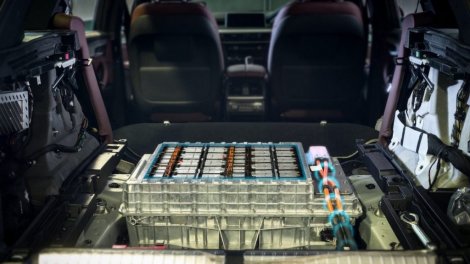Thibaut Simon, Media365published on February 19
The lithium-ion battery has established itself on the automotive market since its development in the 1990s. But it is not the only technology; there are other types of battery.
Today, the lithium-ion battery is the benchmark in the production of electric cars. If China produces 79% of batteries of this type in the world (2021 figures) – the United States (6%), Hungary (4%) complete the podium while France should reach 2% in 2025 – countries around the world are also trying to find more ecological solutions to use, produce and recycle these lithium batteries. But did you know that other batteries exist? From lead to nickel, here are some examples.
The lead acid battery
Thermal or electric vehicle, the lead battery was born in 1859. Now used as a storage device, it is gradually making its way onto the market. With limited capacity, its advantages remain its low cost and ease of production and recycling. At the dawn of the 20th century, the lead battery was used in “La Jamais contente”, the first car to exceed 100 km/h. Today, we find the lead battery in some “cheap” electric cars. These are mainly Chinese models, smaller. Some quadricycles also opt for this battery.
The nickel “do you want some, here you go”!
Nickel-Cadmium ! This process was used in rechargeable batteries from the 90s with high storage density. Banned today due to toxicity, the nickel-cadmium battery entered the production process of electric vehicles. Still with nickel, the combination with the metal this time was previously used for hybrid cars in the early 2000s. Its success is due to the absence of heavy metals. However, the nickel battery is present in first generation hybrid and plug-in hybrid models. Toyota, for example, is now turning to lithium-ion batteries.
Solid battery
This concept is in the state of research. For several years, scientists have been exploring the concept of a solid battery, that is to say a battery without liquid electrolyte : conductive substance which allows the passage of ions. According to reports, this concept has nothing but advantages: high energy density, simpler component management. However, we will have to wait before seeing it land on the market.
Two-way battery
We will talk about bidirectional charging. With this type of battery, compatible cars can power an entire network such as the home for example. If you have solar panels, the excess energy produced can be used and stored in your car's battery. It simply receives and sends energy.
What future for batteries?
If the lithium battery is therefore in pole position to equip all non-thermal models in the coming years, its combination with certain elements could increase the autonomy of vehicles. This is the case for sulfur. From 400 to 1,600 km of autonomy, the lithium-sulfur battery appears to be a good alternative to the lithium-ion battery. Another possible combination,lithium iron phosphate battery. Less expensive, it can be recycled better than its counterparts. Currently, the lithium battery is the most used technology, but other technologies should soon arrive. The actors are working on it!

